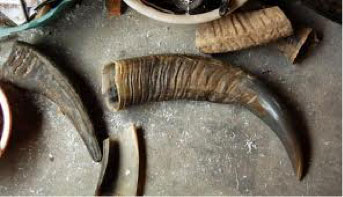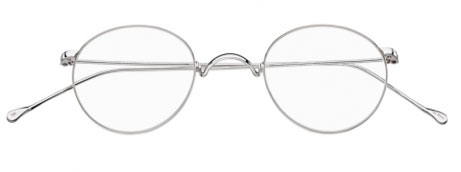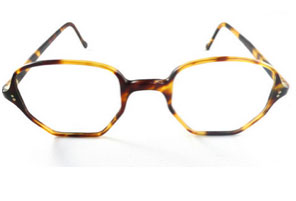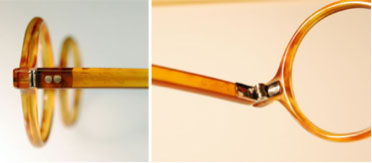In a lot of ways, patients don't just buy eyeglasses anymore—they buy your business's story. That means companies must constantly refine their stories and present them in innovative ways.
A brand story envelops your mission as a company, your culture and your history:
- Why do you do what you do?
- How did you get started?
- Where are you going?
- What is most important to you?
- What are your values?
Social networks give you endless possibilities to share your compelling narrative. However, never underestimate the personal connection and the value of a good story expertly presented.
Many years ago, I worked for an extraordinary gentleman who is a master at storytelling. When talking about his high-end, handmade product he gave the history of the frame—where it came from, why it was made, how it was made, and who made it. He was not trying to make a sale that particular day; his intention was to have his audience salivate over the product. He wanted them to talk about these eyeglasses over dinner to their friends. He planted the seed to desire such a valuable piece of eyewear. His business has been thriving for several decades. Many people have retold his stories and somehow, they have a tendency to get more and more colorful.

Natural Horn is one of the earliest materials used to make eyeglasses. The horns we use today are from Asian or African water buffalo and therefore are a natural by-product of cattle raising.
Horn eyewear is hypoallergenic, lightweight and strong. Unlike other frames, no wire is needed in the core of the temples to hold the shape of the frame.
Horn eyewear requires special care during the lab processing.

Each Buffalo Horn frame is a unique piece of eyewear.

Frame made of 18kt gold.

Genuine tortoise shell frames are considered the true "Creme de la Creme" for any eyewear lover. The nature of the material gives these eyeglasses a whole different feel, not to mention the fact they are ultra-light weight. Tortoise shell frames are made from the outer blades covering the upper shell of the Hawksbill turtle and the Loggerhead turtle. Fortunately, it has been illegal to produce tortoise shell products since the 1970s. The beauty and rarity of real Tortoise Shell is tempered by its sad history. In order to buy or sell Tortoise Shell legally, it must be at least a hundred years old and a genuine antique, or have originated from a private collection.
Most Tortoise Shell is the dark brown or a reddish-brown variety with translucent amber highlights. Tortoise Shell can also be Blonde or Demi-Blonde. Blonde Tortoiseshell is rarer and is considered more valuable and can range from an even pale yellow to a deep amber color.

Now imagine what your business could look like if you were to capture your patients' attention with your anecdotes. And think about the social media possibilities!
Here are a few Storytelling Tips:
- One of the best things a company can do is be transparent about why it is doing what it does. My favorite model to help brands push past the "what" and "how" of their story and find their "why" is Simon Sinek's Golden Circle Theory. This theory focuses on "Why do you wake up in the morning?" and "Why are you so passionate about this?"
- Not quite sure how to go about brainstorming your "why?" Watch Simon Sinek's TedTalk.
- Share your "why" in distinctive ways.
Make your story engaging and easy to share. Make it personal; be authentic when telling your story in person. When sharing your story on social media, pepper it with elements that inspire your audience to promote your content. Here are a few ideas for getting customers to share your content:
- Put a video on your site. Rather than just telling your story in text in the About Us section of your website, create a video as well. It could feature employees talking about why they work for you and how they hope the company's products or services will help customers. Be sure to make it personal.
- Post photos. One of the easiest ways to enhance your story is to add images to your site or social network. If you have a cool office or store, showcase it. Also, post photos of customers and your team to highlight the people behind your brand's success.
- Add a few quotes. Many sites put up long testimonials from customers, but you should go further. Get quotes from your leadership, customers and business partners that help tell the "why" of your story. Then showcase only the words or sentences that really tell the story and give them a beautiful visual treatment.

Maggie Sayers is a professional development coach and a Master Optician. Her optical career started over 30 years ago in a family business in Germany.
Since she came to Florida in 1987, she has worked diligently to promote high professional standards in opticianry. Her mission is to help opticians achieve their personal success through serving the public as vision experts.
As a professional development coach Maggie provides education workshops that focus on leadership and personal engagement. Her time management course has inspired many participants to think outside the box, apply newly acquired knowledge and achieve extraordinary results.
Maggie's enthusiasm for opticianry is inspiring and her keen business sense paired with excellent communication skills make her a highly sought after motivational speaker.












